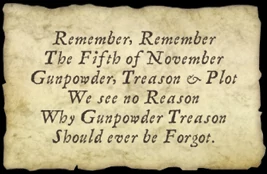Tartans, Bagpipes, and Holiday Cheer: Join the Alexandria Scottish Walk!
Join the Festivities at the Alexandria Scottish Walk!
Get ready to step into the holiday spirit this December as Old Town Alexandria comes alive with the annual Scottish Christmas Walk Parade! For over 50 years, this beloved tradition has transformed the historic streets into a vibrant celebration of Scottish culture, history, and holiday cheer.
Whether you're a local or visiting for the season, this is your chance to immerse yourself in the rich traditions of Scotland. Bagpipes, drums, tartan-clad marchers, and lively floats will wind their way through Old Town’s cobblestone streets, accompanied by Scottish terriers and clan banners. The Alexandria Scottish Walk is a visual and auditory feast that brings Scottish heritage to life, with a special nod to the city's own history—Alexandria was named after Scotsman John Alexander, and the parade honors that legacy with grandeur and charm.
A Weekend Full of Festivities
The Scottish Walk Parade is just one part of the broader Scottish Christmas Walk Weekend, which promises activities and fun for all. Leading up to the parade, visitors can enjoy a host of holiday-themed events, including:
- Heather and Greens Sale: Find your perfect holiday wreath or greenery.
- Holiday Home Tours: Explore historic, beautifully decorated homes in Old Town.
- Taste of Scotland: Sample fine Scottish whisky and gourmet dishes.
- Holiday Marketplace: Shop for unique gifts and handmade crafts from local vendors.
Special Invitation to the MacNeil Gathering
If you’re planning to join the festivities in Alexandria this year, Vivian Ramirez and her family invite you to a special MacNeil gathering the night before the parade! This intimate event will feature delicious Scottish flavors and is the perfect way to kick off the weekend’s celebrations. To RSVP and receive further details, please email Vivian at vchangdc@yahoo.com.
Parade Details & Community Impact
The Scottish Walk Parade will be held on the first Saturday of December (12/07/2024), starting at 11 a.m. The route begins at St. Asaph and Wolfe Streets and weaves through the heart of Old Town, making it easily accessible for all. Arrive early to secure a good spot and enjoy the full spectacle!
Best of all, your participation supports a great cause—proceeds from the weekend benefit the Campagna Center, which provides crucial support for children and families throughout Alexandria. By attending, you’ll be contributing to the well-being of the community, all while enjoying a timeless holiday tradition.
Buaidh no bas!
Don't miss out on this incredible opportunity to be part of Alexandria's most festive and culturally rich holiday event. Dust off your tartans, get ready to hear the pipes, and join us for a weekend of fun and celebration that you won’t soon forget!
"Buaidh no bas!" (Victory or death) is the rallying cry of the MacNeil clan—so, in the spirit of strength and unity, we look forward to seeing you at the parade!
More details are on the Alexandria Scottish Walk website: https://www.campagnacenter.org/alexandria-scottish-christmas-walk-parade/
Tartans, Bagpipes, and Holiday Cheer: Join the Alexandria Scottish Walk! Read More »




